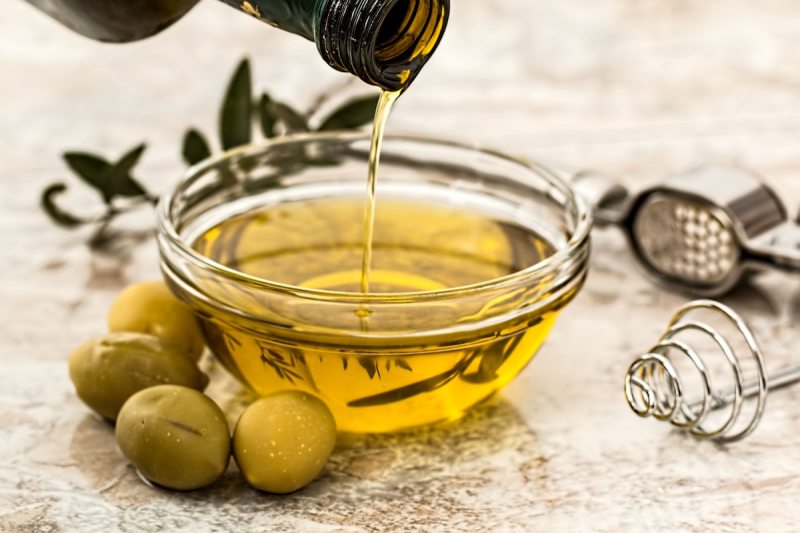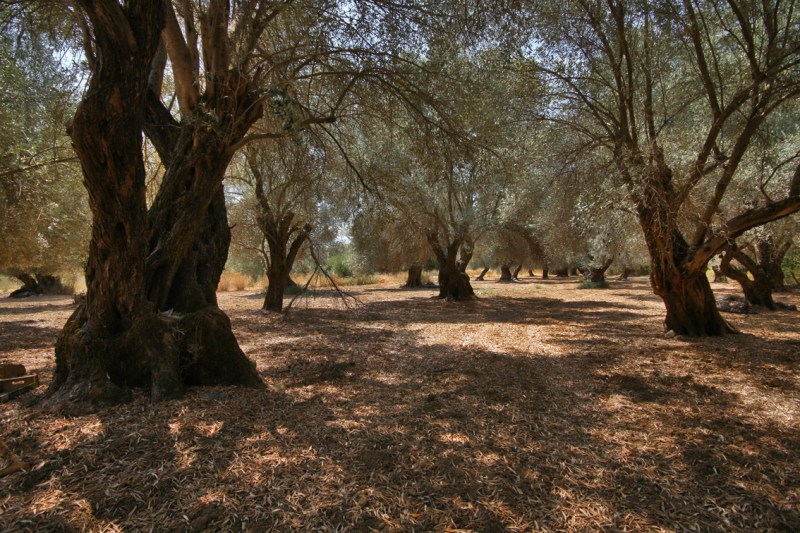A world without olive oil seems impossible, or at the very least, much less delicious. But as climate change renders warmer growing seasons and more extreme droughts, affecting grocery store staples, we begin to rethink our agricultural ways. It all begs the question: Is olive oil truly sustainable?
Globally, the U.S. is not a huge player in the olive oil game but it remains a vibrant industry here, especially in California. Spain produces about half the olive oil in the market, with Portugal, Italy, Greece, and others playing significant production roles as well. Lately, these are places that have endured their share of fires, heat waves, and prolonged dry spells.

Is the California drought and climate change affecting olive oil production?
California is in the midst of a historic drought, with little relief in sight. Water restrictions have been issued in many places and the parched landscapes can remind us of Grapes of Wrath. But olive trees don’t need much water, at least compared to other crops, like pasture, pistachios, alfalfa, and citrus.
Samantha Dorsey is the president of McEvoy Ranch in Sonoma County. The brand launched in 1990 and specializes in olive oil, along with specialty items and wine. She says that the trees themselves can handle a lot of climate abuse and are cut out to deal with the persistent heat of the American west.
“Olive trees are extremely drought tolerant and can handle high heat,” Dorsey says. “They are very tenacious and resilient trees. The dry conditions may affect annual crop loads but the trees bounce back with minimal winter rains.” She adds that olive oil is good for human health as well as that of the planet, given a few key details.
“Olive oil production has low water demand, olives can easily be grown organically, the orchards can be enormous carbon sinks if managed properly, and
What of the many massive fires that have plagued the state and its growing zones over the last several years? Dorsey says olives are well-suited for the future because, unlike wine grapes, they don’t experience smoke damage. She says plants can produce delicious EVOO even after weeks in smoky conditions. “Plus, the olive trees themselves can bounce back from fire damage if the heart of the tree isn’t too scorched,” Dorsey adds. “We have seen lots of damaged orchards re-sprout after fire and have begun producing again in a matter of years.”
In terms of continuing to move forward, Dorsey says the industry is looking at new packaging, as well as new uses for the olive oil pomace, so often discarded as waste. She says farmers are also looking into ways to maximize water use.

How the olive oil industry is becoming more sustainable
Things are different depending on where the olive oil is produced, whether it be regulations or traditional protocol. MANNI is a producer out of Tuscany and helping to lead the way in terms of sustainability. Its founder, Armando Manni, says the industry is evolving, albeit slowly.
“We are the only olive oil maker working with a Circular Economy Production Platform,” he says. “In short, it means that we operate with a no-waste mentality: When we process an olive to make the oil, we don’t waste any water or olive pulp (pomace). Our patented technology allows us to retrieve the water used before the extraction process, creating a waste water with antioxidant polyphenols on one side and the pure water on the other side. The orange pulp is used to create an olive powder that gets repurposed as well.”
Manni estimates that eight of ten olive plantations in the world don’t irrigate, including his. Instead, he re-uses rainwater and applies other clever techniques in the field. “We pay extra attention to properly work on the ground in the winter, moving dirt around and digging deep around the trees so that when it rains, the water can penetrate deeply in the ground,” he says. “This way, when the rainwater evaporates from the ground in the summer, the roots of the olive trees receive just the right amount of humidity to fight the dry season.”
Some of that evolution and adaption he referenced has to do with finding cooler growing areas. Manni says there are olive trees growing in cooler, mountainous areas that would have never been there 50 years ago. Perhaps surprisingly with this particular crop, the larger challenges related to climate change may have less to do with water use and more to do with pests.
“Global warming brings new types of fungus and parasites, new insects that destroy our crops,” he says. “We, of course, still need rain and humidity for our lives to mature properly but the arrival of new parasites, insects, etc., is the main issue.”
The 2022 olive harvest is just about here, and despite a hot summer with very little rain in Tuscany, things are looking okay. “September gave us a few days of nice, mild rain which prevented olive flies from disrupting our upcoming harvest,” Manni says. “Our olives are healthy and almost ready to harvest, two weeks earlier than usual.”
In California, Dorsey says spring frosts are the culprit for what will likely be lower yields, but the quality is there.
What to shop for?
There are a few things you can do to enjoy olive oil and maintain a certain level of sustainability in the process. Look for large recyclable containers and, if you’re lucky enough to live near an oil-producing area, look to fill and refill there. Going local is almost always a positive, as it limits the carbon footprint of transit. If you’re just at the store, look for the full EVOO title and specifics on where the olives are coming from and how they’re grown.
Do your homework. Brands like McEvoy promote biodiversity and use alternative power sources like wind to keep the system in check. Look for certifications like organic, but don’t let that be the final arbiter. It’s often better to source from smaller producers, as their farming approaches tend to be far less industrial and therefore more environmentally sound. Lastly, if you can avoid glass, all the better. There are bag-in-box and aluminum options that require fewer resources to create, are often lighter for shipping, and most often can be recycled.


